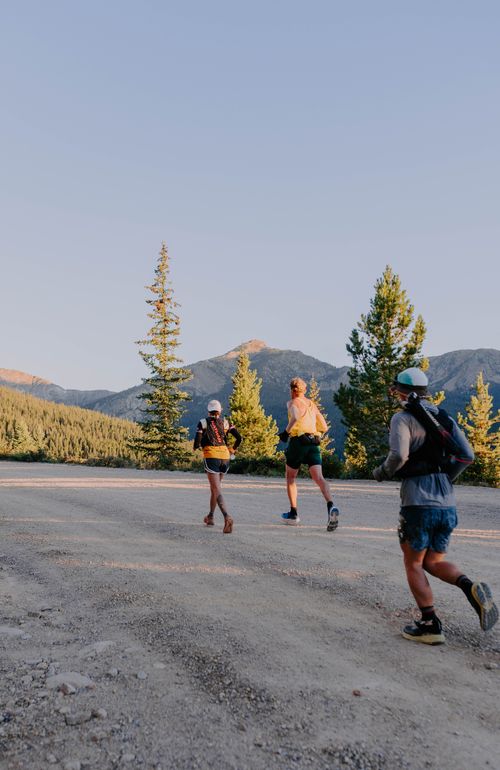You did it. You’ve just conquered one of the hardest endurance challenges in the world — whether that was grinding over 12,600 ft of elevation in the Leadville 100 MTB, or cresting Hope Pass twice in the Leadville 100 Run. Months of high-volume training, weeks at altitude, and one massive race day are now behind you.
Now comes the phase that too many athletes shortchange: post-race recovery.
What Is “Recovery” for Endurance Athletes?
Before we jump into strategies, let’s ground ourselves in what recovery actually means. A 2022 study on endurance athletes defines recovery as:
“An inter- and intra-individual multi-level process for the re-establishment of performance abilities that can be systematically used to optimize situational conditions, to build up and refill personal resources, and buffers.”
In simpler terms:
Multi-dimensional: Recovery is physical, psychological, emotional, social, and behavioral.
Individualized: It varies from athlete to athlete.
Situational: The “right” recovery strategy depends on the demands of your race, your training history, and your life outside sport.
Active: It’s not just passive rest — it’s a purposeful process to rebuild energy, restore readiness, and reset your mind and body for future training.
After Leadville, this means recovery is about much more than “just taking time off.” It’s a structured phase to help you absorb the months of work you’ve done, repair race-induced muscle damage, and return stronger.
A Perfect Time to Reflect with Your Coach
Post-race recovery isn’t only about your muscles and glycogen stores — it’s also an ideal time to evaluate your season so far. The days and weeks after a major event like the Leadville 100 Run or MTB are a prime window to connect with your coach for a thorough debrief.
Why now?
The race experience is fresh, so your pacing, fueling, and decision-making details are still sharp.
You can review what worked well and where improvements could be made.
It helps set the direction for your next training phase, ensuring you re-enter structured work with a clear, informed plan.
A post-Leadville conversation transforms your race day lessons — and even the emotional highs and lows — into a smarter roadmap for your future goals.
The Leadville Recovery Window
Post-Leadville recovery happens in two overlapping phases:
Global Recovery (first 1–2 weeks)
Focus: restoring whole-body energy, tissue repair, and reducing residual inflammation.
Focused Recovery (weeks 2–4)
Focus: gradually reintroducing structure and intensity while maintaining recovery momentum.
In both phases, the fundamentals matter more than the fancy stuff.
Tier 1: The Non-Negotiables
1. Sleep
Why it matters: Sleep supports muscle repair, hormone balance, and nervous system recovery.
Evidence: Strong links between sleep quality and athletic performance exist across sports.
Leadville tip: Travel, race-week nerves, and post-event adrenaline can disrupt sleep — aim for 8–9 hours nightly now, plus naps if needed.
2. Nutrition & Hydration
Why it matters: You’ve likely burned 6,000–10,000 calories and depleted glycogen stores.
Evidence: Post-exercise carbohydrate + protein accelerates glycogen resynthesis and muscle repair.
Leadville tip: Within 1–2 hours post-race: 1.0–1.2 g carbohydrate/kg + 20–30 g protein. Keep carbs and protein high in daily meals for at least the first week.
3. Training Load Management
Why it matters: Returning to high-intensity training too soon increases injury risk and delays adaptation.
Leadville tip: No intervals for at least 10–14 days post-event. Use low-intensity activity to maintain circulation without adding stress.
Tier 2: Context-Dependent Recovery Tools
4. Compression Garments (CG)
Moderate compression (12–21 mmHg) can improve perceived leg comfort and jump performance post-exercise. Results vary for other markers.
Leadville tip: Useful in the first few days post-race to reduce swelling from prolonged climbing/descending.
5. Cold-Water Immersion (CWI) & Cryotherapy
CWI (<14 °C) may reduce heart rate, CK levels, and soreness after intense endurance work. Overuse can blunt adaptations.
Leadville tip: If doing MTB + Run double or racing again soon, CWI can help speed acute recovery. Otherwise, use mainly for comfort.
6. Massage
Short-term DOMS relief, mainly via psychological effects.
Leadville tip: Great for mental decompression and perceived freshness.
7. Active Recovery
Low-intensity movement post-exercise helps lactate clearance; benefits may be more mental than physical.
Leadville tip: Easy spins, short hikes, or gentle swims in the first few days.
Tier 3: Optional or Overhyped
8. Curcumin, Tart Cherry Juice, & Supplements touted on the internet
Limited consistent benefit for recovery >90 min in endurance athletes.
Leadville tip: Focus on whole-food nutrition first.
9. Extreme Cryotherapy as Routine
May impair adaptation if overused; best for acute needs.
Putting It Together: A Post-Leadville Recovery Plan
Days 0–3 (Immediate Recovery)
Prioritize sleep and nutrition.
Light walking or gentle spins only.
Optional: compression socks, 10–15 min CWI at <14 °C.
Days 4–10 (Global Recovery)
Resume light aerobic activity.
Add mobility and gentle stretching.
Optional massage for relaxation.
Days 11–21 (Focused Recovery)
Gradually increase aerobic work.
Introduce light strength training.
Avoid threshold/VO₂ intervals until fully restored.
Common Post-Leadville Recovery Mistakes
Skipping the rest window.
Relying on gadgets over fundamentals.
Over-icing without need.
Ignoring mental fatigue.
Final Thoughts
Your Leadville effort was the pinnacle of months of work. The recovery period that follows is where your body consolidates those gains and sets the stage for your next performance peak.
Build around sleep, nutrition, and smart load management, then layer in tools like compression, cold immersion, and massage when they fit. And don’t forget — a debrief with your coach now can turn this race into a springboard for your next big goal.

